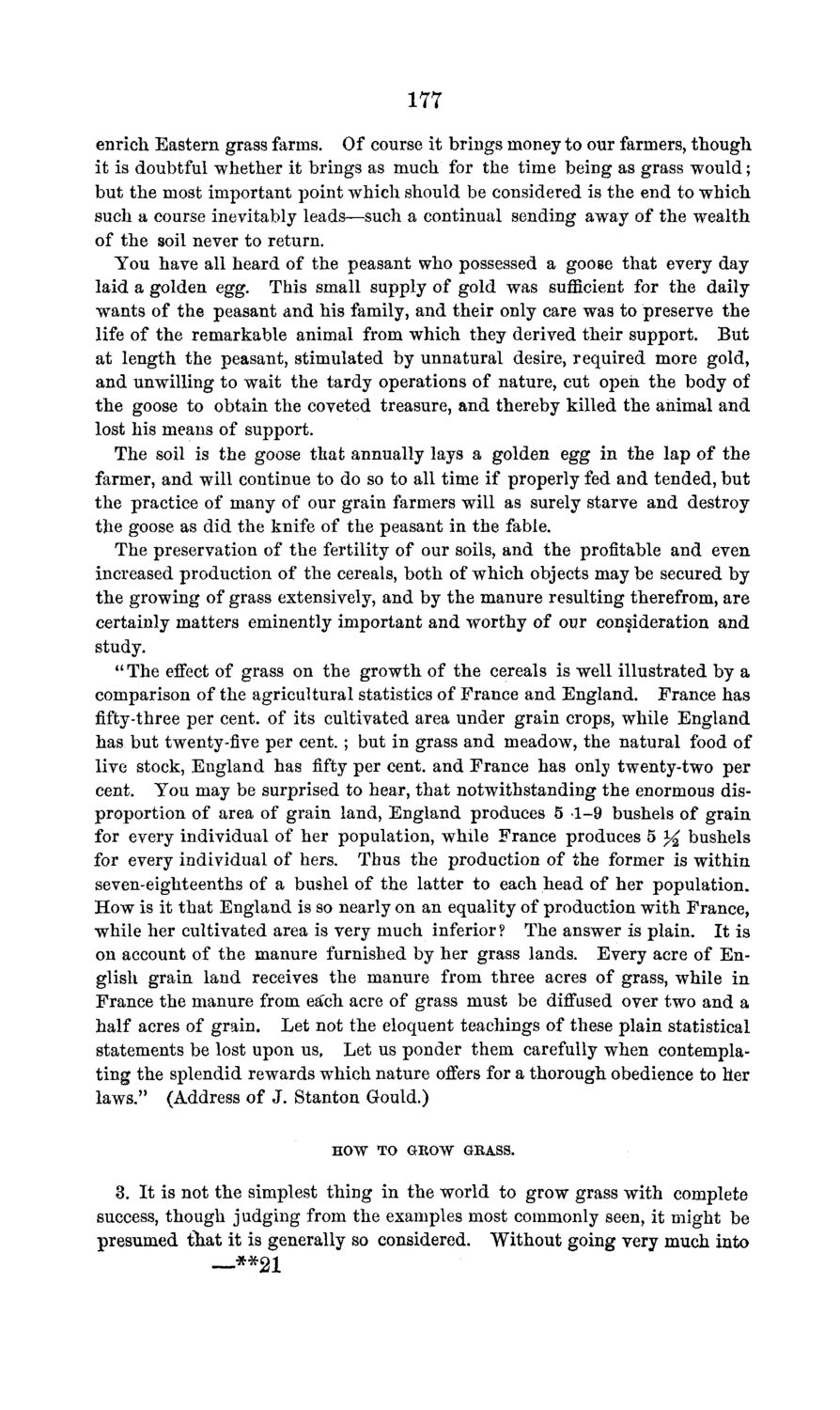| |
| |
Caption: Board of Trustees Minutes - 1869
This is a reduced-resolution page image for fast online browsing.

EXTRACTED TEXT FROM PAGE:
177 enrich Eastern grass farms. Of course it brings money to our farmers, though it is doubtful whether it brings as much for the time being as grass would; but the most important point which should be considered is the end to which such a course inevitably leads—such a continual sending away of the wealth of the soil never to return. You have all heard of the peasant who possessed a goose that every day laid a golden egg. This small supply of gold was sufficient for the daily wants of the peasant and his family, and their only care was to preserve the life of the remarkable animal from which they derived their support. But at length the peasant, stimulated by unnatural desire, required more gold, and unwilling to wait the tardy operations of nature, cut open the body of the goose to obtain the coveted treasure, and thereby killed the animal and lost his means of support. The soil is the goose that annually lays a golden egg in the lap of the farmer, and will continue to do so to all time if properly fed and tended, but the practice of many of our grain farmers will as surely starve and destroy the goose as did the knife of the peasant in the fable. The preservation of the fertility of our soils, and the profitable and even increased production of the cereals, both of which objects may be secured by the growing of grass extensively, and by the manure resulting therefrom, are certainly matters eminently important and worthy of our consideration and study. " The effect of grass on the growth of the cereals is well illustrated by a comparison of the agricultural statistics of France and England. France has fifty-three per cent, of its cultivated area under grain crops, while England has but twenty-five per cent. ; but in grass and meadow, the natural food of live stock, England has fifty per cent, and France has only twenty-two per cent. You may be surprised to hear, that notwithstanding the enormous disproportion of area of grain land, England produces 5 1-9 bushels of grain for every individual of her population, while France produces 5 J^ bushels for every individual of hers. Thus the production of the former is within seven-eighteenths of a bushel of the latter to each head of her population. How is it that England is so nearly on an equality of production with France, while her cultivated area is very much inferior? The answer is plain. It is on account of the manure furnished by her grass lands. Every acre of English grain land receives the manure from three acres of grass, while in France the manure from each acre of grass must be diffused over two and a half acres of grain. Let not the eloquent teachings of these plain statistical statements be lost upon us, Let us ponder them carefully when contemplating the splendid rewards which nature offers for a thorough obedience to her laws," (Address of J. Stanton Gould.) HOW TO GROW GRASS. 3. It is not the simplest thing in the world to grow grass with complete success, though judging from the examples most commonly seen, it might be presumed that it is generally so considered. Without going very much into _**21
| |